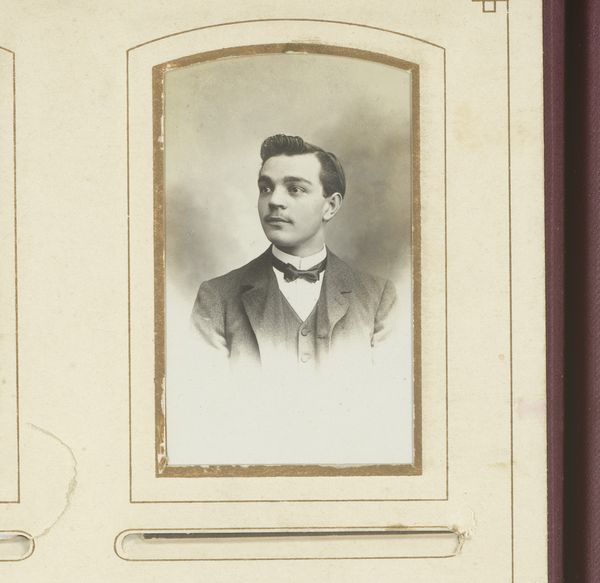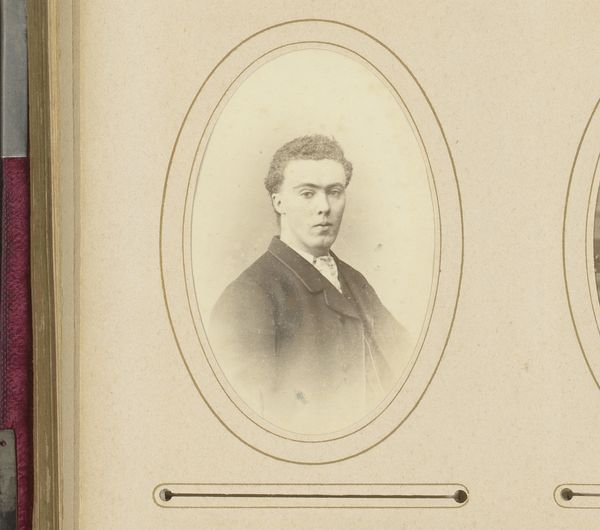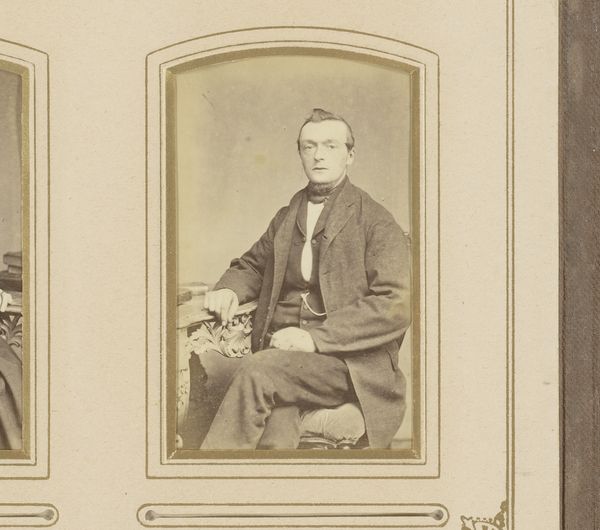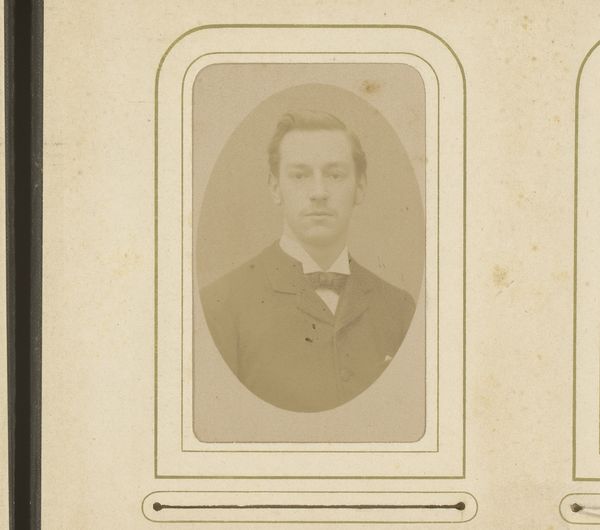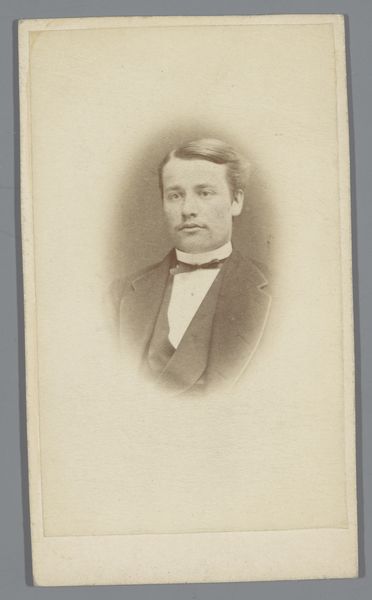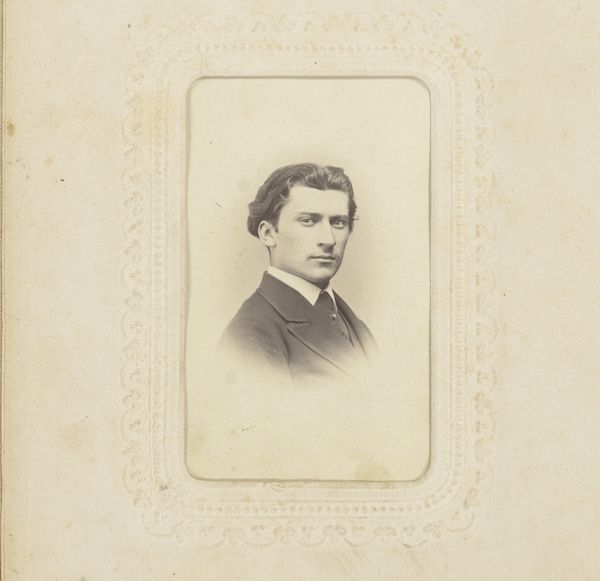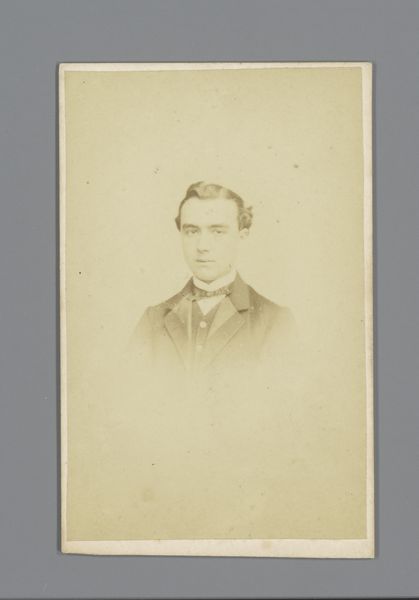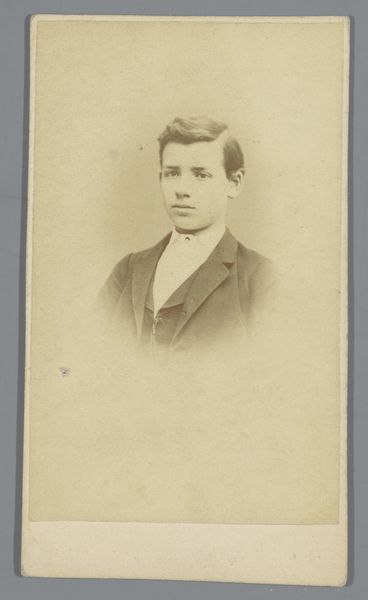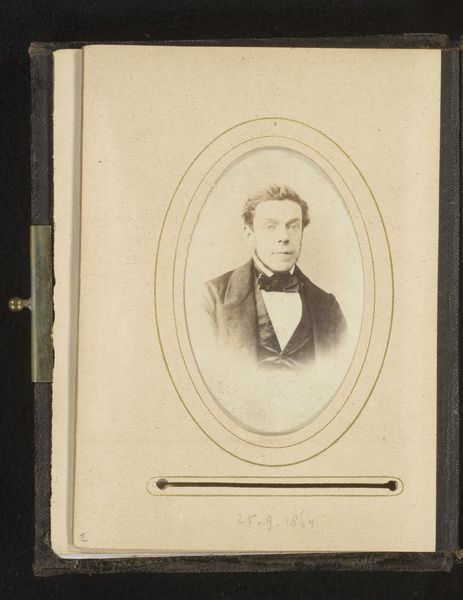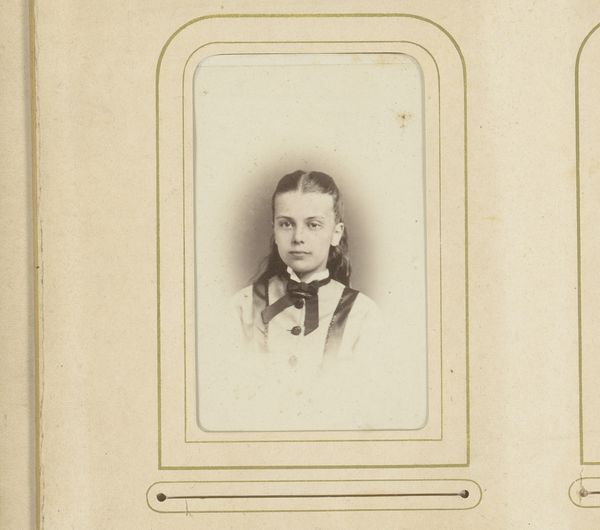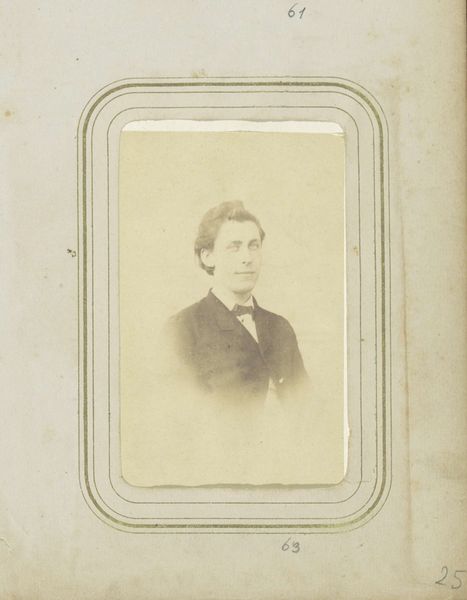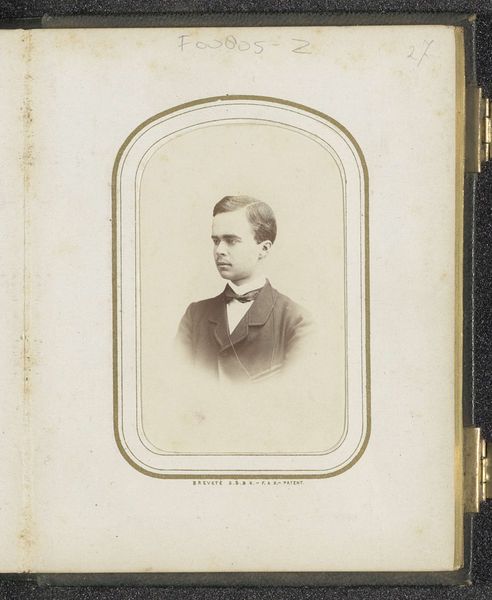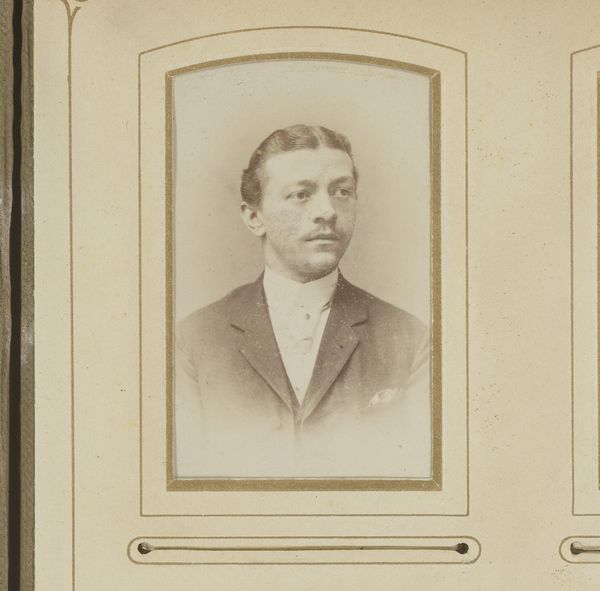
#
toned paper
#
charcoal drawing
#
charcoal art
#
portrait reference
#
pencil drawing
#
portrait head and shoulder
#
portrait drawing
#
facial study
#
portrait art
#
fine art portrait
Dimensions: height 87 mm, width 53 mm
Copyright: Rijks Museum: Open Domain
Editor: Here we have "Portrait of a Young Man with Bow Tie" by Ferdinand Dürr, created sometime between 1860 and 1900. It’s rendered in charcoal on toned paper. I’m struck by the way the soft charcoal almost dissolves the figure into the background. What do you make of this piece? Curator: Looking at it materially, the use of charcoal and toned paper speaks volumes about artistic training during that period. Charcoal was a cost-effective and accessible medium, facilitating widespread artistic education. Consider the paper itself; its tone is critical. Why not a stark white? The answer lies in the subtleties of value achievable with charcoal. It allowed for nuanced representation. Editor: So, the materials themselves influenced the style? Curator: Precisely. Furthermore, consider the social context. The rise of the bourgeoisie created a demand for portraiture, not just of the elite, but of the aspiring middle class. Charcoal portraits, like this one, provided a more affordable alternative to oil paintings, democratizing access to image-making. The artist here is making something more accessible, creating a different kind of relationship with their patron, don't you think? Editor: That’s fascinating. It's interesting how the economic considerations drove artistic choices in both medium and subject. Curator: And this informs how we understand art, and our relationship to the means by which it's made. It shifts focus from solely aesthetic appreciation towards a consideration of production, labor and class. It makes me wonder what choices the artist might have made differently with access to other, more ‘valuable’ material, for example, oil paints or more expensive paper? Editor: It certainly provides a different lens for viewing what was a common subject at the time! I will definitely consider this next time I encounter portraiture. Curator: It opens up interesting avenues for inquiry, doesn't it? Thinking beyond simply 'what' the artwork shows us, but *how* it got to be.
Comments
No comments
Be the first to comment and join the conversation on the ultimate creative platform.
